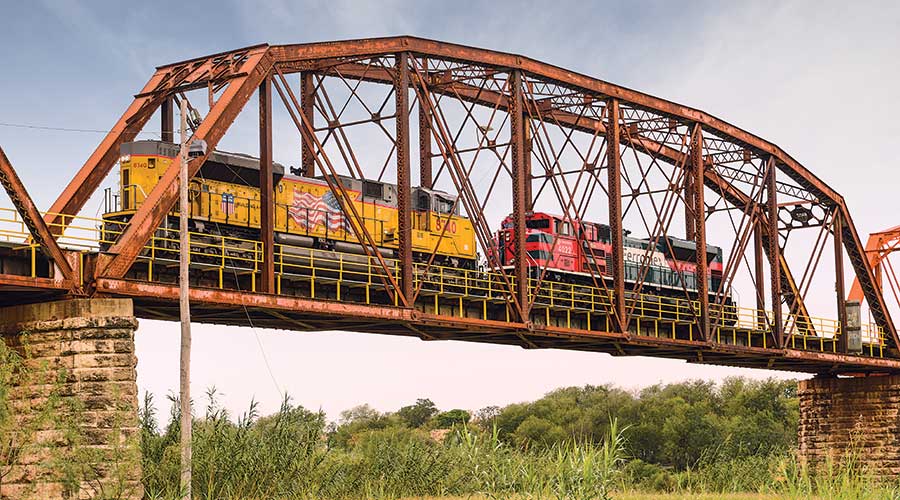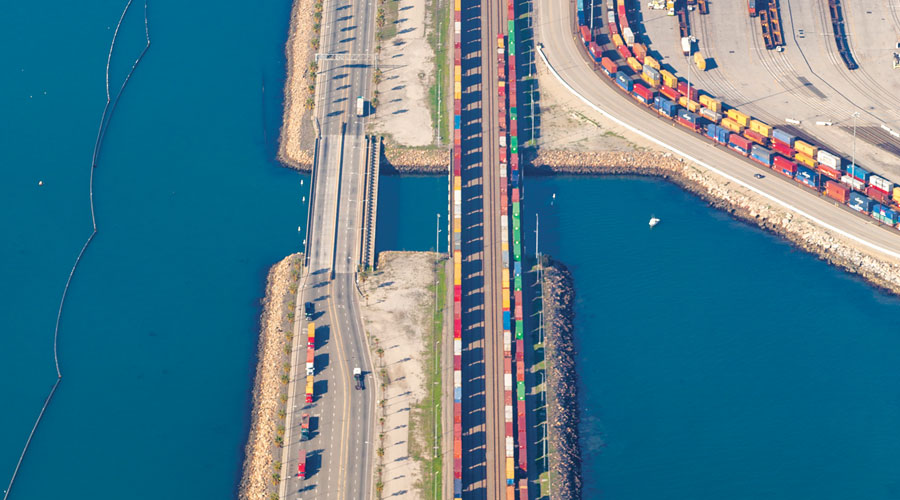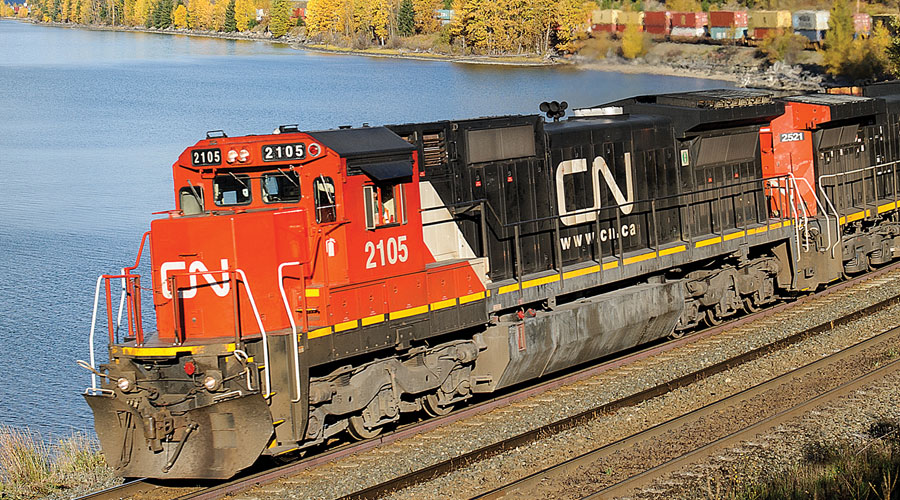Stay updated on news, articles and information for the rail industry
September 2013
Rail News: Intermodal
Union Pacific banks on aerodynamic double-stack train device to pay drag-reduction dividends
By Jeff Stagl, Managing Editor
Union Pacific Railroad long has tried to develop technologies promising operational benefits and sustainability gains. The Class I pioneered environmentally friendly generator-set locomotives in the early 2000s and more recently worked with Progress Rail Services Corp.'s Electro-Motive Diesel to begin using new SD59MX locomotives featuring aftermarket exhaust systems in southern California.
Now, the railroad has added another "arrow" to its technological-advancement quiver. The Class I recently unveiled the Arrowedge®, an aerodynamic device developed by UP employees that's designed to help reduce fuel usage and emissions on double-stack intermodal trains.
Positioned on top of the container in the first double-stack well car immediately behind the locomotives, the Arrowedge — pronounced "arrow-wedge" to stress its tapered body — allows air to more easily flow around the train's top, frontmost containers. The projected benefits: less aerodynamic drag and a decreased amount of locomotive power needed to propel an intermodal train.
In early September, UP introduced one 48-foot Arrowedge on double-stack trains moving between the railroad's Global IV intermodal terminal in Joliet, Ill., and intermodal container transfer facility in Long Beach, Calif. Seven other Arrowedges are being built and are slated for delivery in early 2014, says Mike Iden, UP's general director of car and locomotive engineering.
The eight devices are tailored to be positioned on 40-foot international containers moving between the Joliet and Long Beach facilities.
"There have been internal discussions about a potential 53-foot device for domestic containers," says Iden, adding that an Arrowedge also might be used on the end of a double-stack, distributed-power train.
For now, Iden and other UP officials plan to study the device's fuel-burn and emission-reduction impacts in the field. They also will analyze any differences in the "pressure drag" generated at the front of a train and "boat tail drag" created at the rear, says Iden.
"It will take some time to assess, and to study historical data," he says.
Variable winds
Benefits derived from the Arrowedge depend on several variables, such as how a train is made up, which can change how the device is used. In addition, wind conditions can impact drag, says Iden.
UP employees have been developing the Arrowedge for more than five years. In spring 2010, they crafted what is now the latest version that features a much larger body and shows more drag-reduction promise, says Iden.
UP holds two U.S. patents for the Arrowedge, with additional U.S. and Canadian patents pending.
The ideal thing about the device's design: It's transparent to the terminal operator since the Arrowedge can be loaded and unloaded with conventional terminal equipment, says Iden.
"They can handle it just like a container," he says.
Although it's too early to make any projections about fuel savings or emission reductions, Iden believes there's at least one outcome the Arrowedge can achieve after assessments are completed.
"I believe it will provide a return on its cost," he says.
Keywords
Browse articles on Union Pacific intermodal ArrowedgeContact Progressive Railroading editorial staff.


 2025 MOW Spending Report: Passenger-rail programs
2025 MOW Spending Report: Passenger-rail programs
 Gardner steps down as Amtrak CEO
Gardner steps down as Amtrak CEO
 Guest comment: Oliver Wyman’s David Hunt
Guest comment: Oliver Wyman’s David Hunt
 Women of Influence in Rail eBook
Women of Influence in Rail eBook
 railPrime
railPrime







